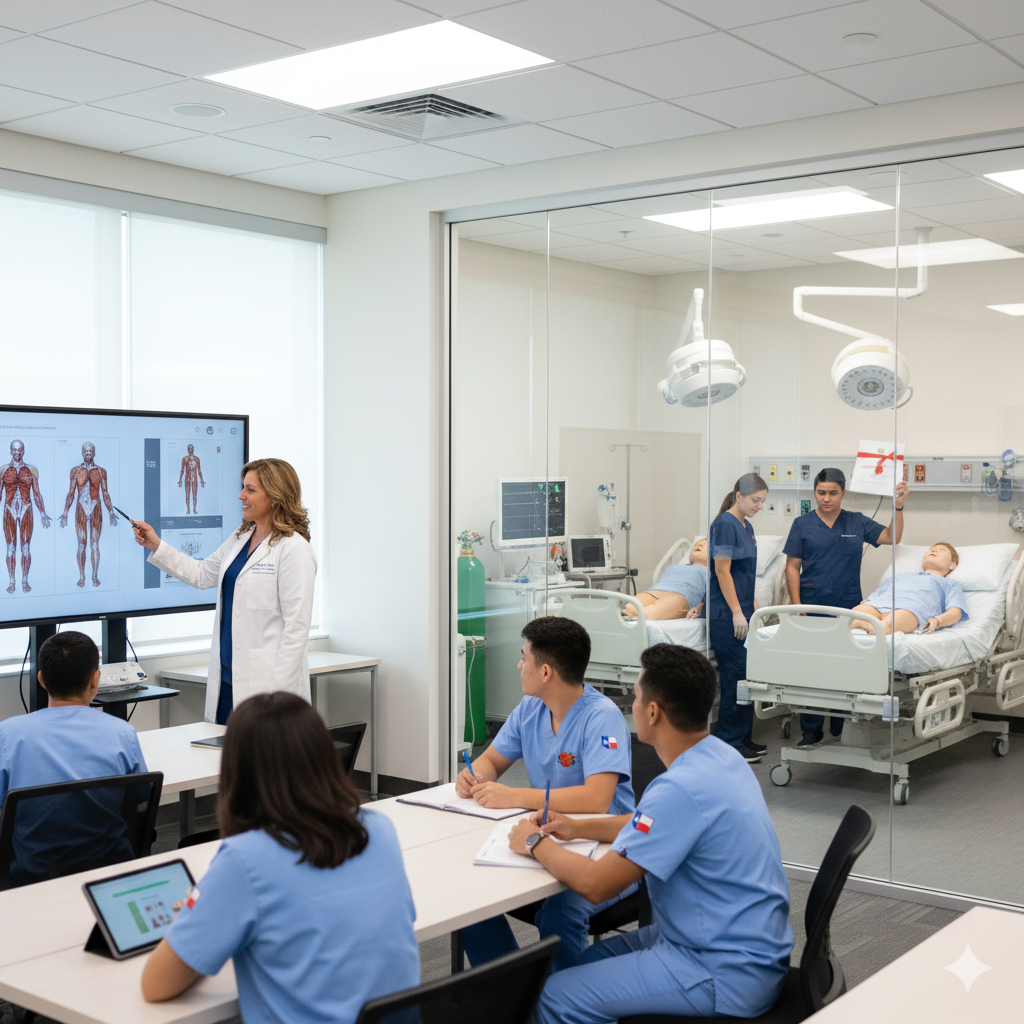If you’re working as a Certified Nursing Assistant (CNA) in Texas and are considering taking the next big step to become a Registered Nurse (RN), you’re on the right path. Texas is one of the best states for career advancement in nursing, thanks to its growing population, extensive healthcare system, and high demand for qualified professionals.
In this comprehensive guide, you’ll find all the steps, resources, and tips you need to go from CNA to RN in Texas—whether you’re in Houston, Dallas, Austin, or beyond.
Why Become an RN in Texas?
1. Higher Salary and Demand
CNAs in Texas earn about $30,000–$35,000 per year, while RNs can earn $75,000–$90,000 annually, depending on location and experience. According to the Texas Board of Nursing, the demand for RNs is expected to increase significantly in the coming years due to an aging population and expanding healthcare services.
2. Greater Career Opportunities
Texas is home to top hospitals like Houston Methodist, Baylor University Medical Center, and UT Southwestern, providing diverse opportunities in critical care, pediatrics, emergency nursing, and more.
3. Make a Bigger Impact
RNs play a vital role in diagnosing, planning, and executing patient care. Becoming an RN allows you to take on leadership responsibilities and make a broader impact in your community.
Step-by-Step: CNA to RN in Texas
Step 1: Set Your Career Goals
Ask yourself:
- Do I want a quicker path (ADN)?
- Or a more advanced foundation (BSN)?
- Am I planning to work while I study?
Texas offers flexible CNA to RN bridge programs, ideal for working professionals who want to upskill without quitting their jobs.
Step 2: Choose Your Education Path in Texas
1. CNA to ADN in Texas
- Duration: 18–24 months
- Offered at: Houston Community College, Austin Community College, Tarrant County College
- Advantage: Faster and more affordable
2. CNA to BSN in Texas
- Duration: 3–4 years
- Offered at: The University of Texas at Austin, Texas Woman’s University, Texas A&M University
- Advantage: Higher earning potential, leadership and management roles
💡 Tip: If you’re a CNA in Texas, look for CNA to RN bridge programs in Texas that accept work experience and offer hybrid formats.
Step 3: Fulfill Admission Requirements
Each nursing school in Texas may have different prerequisites. Generally, you’ll need:
- High school diploma or GED
- Minimum GPA (usually 2.5 or higher)
- Prerequisite coursework (Biology, Anatomy, English)
- CPR certification
- TEAS test scores (in some schools)
Proof of Texas residency (for in-state tuition benefits)
Step 4: Apply to Accredited Nursing Programs in Texas
Ensure your chosen school is approved by the Texas Board of Nursing and accredited by either ACEN or CCNE. This ensures you’re eligible to sit for the NCLEX-RN in Texas after graduation.
📝 Pro Tip: Apply early. Texas nursing programs often have limited seats and competitive entry.
Step 5: Find Financial Aid in Texas
Nursing education can be expensive, but Texas offers many options to help students.
Financial Aid Options:
- FAFSA (federal aid)
- Texas Public Education Grant (TPEG)
- Scholarships from Texas Nurses Association
- Loan repayment programs for RNs in rural Texas
Employer-sponsored tuition programs (check with Texas-based hospitals)
Step 6: Complete Your Nursing Program
You’ll engage in both academic and clinical training:
- Classroom Courses: Pharmacology, Pathophysiology, Nursing Ethics
- Clinical Rotations: Real-world experience in local hospitals, like Texas Health Resources or Christus Health
Expect rigorous coursework. Many students in CNA to RN programs in Texas work part-time and study full-time or vice versa.
Step 7: Pass the NCLEX-RN in Texas
After graduation, you’ll need to pass the NCLEX-RN, the national exam required to become a licensed RN.
🔍 You can take the NCLEX at Pearson VUE testing centers across Texas.
Tips for Success:
- Use online prep platforms (Kaplan, UWorld)
- Join NCLEX study groups
- Complete practice tests regularly
Attend free NCLEX workshops in Texas if available
Step 8: Apply for Texas RN Licensure
Apply through the Texas Board of Nursing with the following:
- Proof of graduation
- NCLEX pass result
- Fingerprinting for background check
- Licensing fee ($100–$150 range)
You’ll receive your Texas RN license within a few weeks after approval.
Step 9: Start Your RN Career in Texas
As an RN in Texas, you can work in hospitals, clinics, rehabilitation centers, schools, or even opt for travel nursing roles across the state.
Popular employers include:
- Baylor Scott & White Health
- HCA Houston Healthcare
- UT Health East Texas
- Ascension Seton (Austin)
Many Texas employers value your CNA background and may offer sign-on bonuses or new graduate residency programs.
Bridge Programs in Texas: What to Know
Texas is home to several CNA to RN bridge programs that make your transition faster and smoother. These programs may offer:
- Evening and weekend classes
- Hybrid learning (online + clinicals)
- Recognition of previous clinical experience
- Direct admission for CNAs working in partner hospitals
Check out:
- El Centro College (Dallas)
- South Texas College (McAllen)
Lamar State College (Port Arthur)
Job Outlook for RNs in Texas
According to the Texas Department of State Health Services, the RN workforce is expected to grow by 17% by 2030. This means over 50,000 new RN jobs may be added.
Texas cities like Houston, Dallas, and San Antonio are especially promising due to their large medical centers and fast-growing populations.
Success Tips for CNA to RN Students in Texas
- Use local resources: Texas Workforce Commission, nursing mentorships
- Balance your time: Work, school, and self-care
- Network: Join Texas-based nursing student associations
- Apply for local scholarships: Many counties offer healthcare-specific awards
Get licensed and certified locally: Maintain all credentials through Texas Board of Nursing
Conclusion
Going from CNA to RN in Texas is one of the smartest moves you can make in healthcare. With increasing demand, strong financial incentives, and quality educational options, Texas provides the perfect environment for your nursing career to flourish.
Whether you choose to study in Dallas, Houston, Austin, or a rural community, remember: your experience as a CNA has already laid the foundation. Now, it’s time to build your future.
Frequently Asked Questions
Most programs take 2–4 years, depending on whether you pursue an ADN or BSN. Bridge programs may allow you to finish faster.
Yes! Many CNA-to-RN students in Texas work part-time or on weekends. Several hospitals even offer flexible shifts for nursing students.
No. You can go directly from CNA to RN in Texas without becoming an LPN first.
Yes. Schools like Lone Star College and Texas Tech University offer hybrid programs where theory is online and clinicals are in person.
Public programs can range from $10,000 to $20,000 for an ADN, and $25,000 to $60,000 for a BSN. Use FAFSA and Texas grants to reduce the burden.
No, it’s a national test. However, you must apply for RN licensure through the Texas Board of Nursing.
Absolutely! Many Texas nursing schools offer NCLEX review workshops, and local libraries often host study groups.




